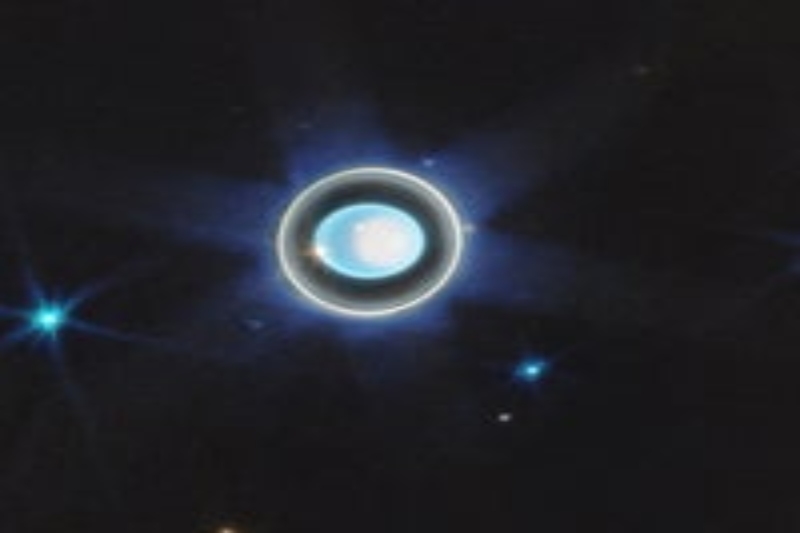NASA unveiled spectacular new photos of Uranus on Monday, offering a breathtaking look at its luminous rings and one seldom-seen feature.
The frozen planet, along with nine of its 27 known moons, a seasonal polar cap, and numerous inner and outer rings, were all photographed by NASA’s powerful James Webb Space Telescope.
The recently released images provide a unique look at the “elusive” Zeta ring, which is the faintest and most diffuse ring nearest to the planet. It is displayed in a reddish brown hue.
A brilliant blue hue was obtained on several other rings.
Snapshots of atmospheric events on Uranus, including the seasonal north polar cloud cap and multiple storms nearby, were also captured by the powerful Webb telescope.
As Uranus gets closer to the solstice and receives more sunlight, its pole moves toward the sun, enhancing the appearance of its polar cap. The next solstice on the planet occurs in 2028.
According to NASA, because Uranus spins on its side at a tilt of almost 98 degrees, it experiences the most severe seasons of any planet in the solar system. One pole experiences sunlight, while the other has a lengthy, dark winter that lasts for 21 years.
Astronomers can now see Uranus and its distinctive features with revolutionary new clarity thanks to Webb’s unmatched infrared resolution and sensitivity, according to NASA. “These specifics, particularly regarding the near-by Zeta ring, will be crucial for organizing any upcoming missions to Uranus.”
NASA added that the planet and the newly acquired photographs of it will support research by NASA scientists on almost two thousand exoplanets of a comparable size that have been found in recent decades.
According to the government organization, “this ‘exoplanet in our backyard’ can help astronomers understand how planets of this size work, what their meteorology is like, and how they formed.” “By setting it in a larger context, this can in turn help us understand our own solar system as a whole.”





